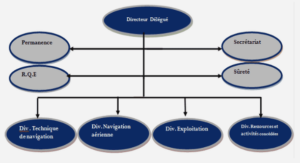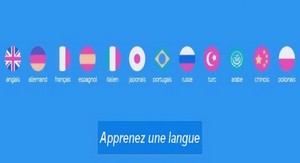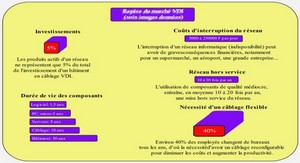Reasons for the choice of the topic and objectives of the work
We have noticed during our training in high school that teachers used the simplest way to develop student’s narrative skills. The technique consisted in asking learners to talk about their holiday, or a recent event that had occurred. We have also observed that they used narrative to practice past simple tense only. This way of proceeding is however not always efficient and instead of acquiring a whole narrative skills, students focused only on a part of narrative activities. Our aim in suggesting this work is then to help teachers find new ways to improve students’ oral narrative skills and to inform them that apart from verb tenses, there are several elements which have to be developed during a narrative session. We have chosen to develop students’ oral narrative skills because when they perform an oral production, they remember narrative rules and many other language elements easily. Correspondingly, we carry out this research work to help students to familiarize with oral performances and to be more confident in speaking English. Students often complain that they lack of vocabulary when performing narration, consequently we decide to use cartoon movies to help them understand the meaning of new words by watching the video.
The second reasons why we have chosen cartoon movies as oral narrative support is that during our training in high school we noticed many teachers do not use schools’ materials such as projector, TV set, VCD though they are available. This is the reason why we suggest the utilization of cartoon movies because some teachers actually do not know the appropriate materials to use for narrative. Some teachers frequently serve stories from book or personal stories for reproduction, though sometimes students get bored and feel reluctant to make narration. We have chosen cartoon movies as oral narrative support because they are authentic materials, as such, they motivate students. Our objective is then to help teachers get rid of monotonous ways of developing narrative by using cartoon movies which are lively and colourful. We have chosen to use short cartoon due to time constraints. Many teachers said that the use of materials such as pictures, video, is time consuming. We carry out this study to inform teachers first about the advantages of using short cartoon movies and secondly to suggest a lesson plan in which we show them the possibility of using these materials with a correct timing. In a word, this book is written to show that developing oral narrative requires techniques and appropriate materials from teachers so, on the one hand, teachers are supposed to know what to develop in oral narrative, and on the other hand, they are supposed to know how to exploit a material in order to transform it into oral narrative support.
Scope and limitations of the work
There are four points to be mentioned concerning the scope and limitations of this work. First of all, we have chosen on the one hand to deal with class T11 because they are not yet concerned by final exams like baccalaureate so they have large time to try different ways of developing oral narrative. On the other hand, we have also decided class T11 because in the curriculum, there is a unit entitled “Describing and Narrating” which indicates that this level is the appropriate one to make any form of production orally or written. Furthermore, cartoon movies are authentic materials and the level of the materials that we have chosen does not really suit the level of the class T10 that is why we focused our attention on a more advanced class. Secondly, although we indicate in the title of our dissertation, this work is for all class T11 in Malagasy lycées, we have limited our investigations in Antananarivo and some places around due to time and financial constraints. Thirdly, our research work requires many special materials to set the video such as laptop or projector, loudspeaker and mainly access to electricity. So our experimentations and researches were made in places where those materials could be used. Finally, there are different genres of cartoon movies such as documentary and historical cartoons but the materials that we have chosen are those which have a beginning, a middle composed by climax and resolution, and an end. We have decided to use those kind of cartoon movies because their structures correspond with narrative structure that we are going to exploit in our work. There are also narrative structure which do not have any climax and resolution but, we have limited our work in one narrative structure with abstract, orientation, complicating action, resolution and coda. We have limited our dissertation with this structure because we do not want to confuse our reader by telling them that there are two kinds of narrative structure and this dissertation would be longer if we proceed in this way.
Narrative as social skills
Apart from telling stories, people also use narrative as a report of a personal experience that occurs in their life. Narrative is a technique of constructing narrative units which match the temporal sequence of that experience […] normally, narrative serves an additional function of personal interest determined by a stimulus in the social context in which the narrative occurs Labov (1967:13). Retelling events seems to be a natural reaction of a human being; Naremore, Densmore and Haman (2000: 35) point out that “one of the most enduring habits of the human mind is our need to give structure and meaning to the experiences of our live”. Current research on narrative as sociolinguistic shows that the way of narrating varies by the gender, age, and class of the narrator. Smith (2006: 475) explains this diversity in his journal Narrative: Sociolinguistic research, he combines statements from different linguists and lists the following field which shows the variety of narration: Gender: Holmes (1997: 286) cited in Smith (2006) states also that: « the women focus on relationships and people, affirm the importance of their family roles, family connections, and friendships.
The men focus on work and sport, events, activities, and things, and affirm the importance of being i n control, even when they don’t achieve it. » Age: By six years old, the classic pattern established by Labov is more in evidence: temporal relationships have developed, but the referential function predominates, with little evaluative function evident, and a paucity of orientation clauses (Snow and Bailey, 1997 cited in Smith: 2006). In later years, there is an increasingly sophisticated use of evaluative devices with increasing age. Syntactic complexity increases with age from preadolescent to adult (Labov, 1972: 393) cited in (Smith: 2006), and remains stable in later years. Class: Labov (1997: 412) observes class differences in narrative: upper middle class speakers report on emotions, while lower class speakers are sparing in their reporting of subjective feelings. Horvath (1987: 219) cited in Smith (2006) also finds differences i n content: the majority of working class speakers’ stories concern themselves and other family members; in middle class speakers’ narratives, protagonists not personally known to them predominate.
b) Reasons for choosing short cartoon movies There are several benefit in using short cartoon movies. Animated movies last often only 7 minutes long, allowing adequate time to put into practice a series of activities to develop narrative and other skills. This shortage helps teacher further to save time. The short cartoons’ brevity allows as well completeness of understanding (about the basic plot, characterization or setting), and even if there are some sequences that students do not understand, animations can be watched several times with a different focus or activity. We also decide to use short cartoon films because students can easily notice the structure and form of the story; this helps them to develop their abilities in producing a good narrative. Herrero (2010: 22) states that short animations lack dialogue (using only two sentences) and clearly demonstrates that the linguistic component is only one of the modes for creating meaning; the visual and gestural modes are a fundamental part of the non-verbal language. This characteristic of short cartoon movies encourages furthermore learners to narrate the story without copying any words and phrases from the film and to create and add themselves some dialogue to illustrate their narratives. Screening an entire feature cartoon in the classroom is sometimes not possible given timetable constraints, because an average film running time is just under two hours. Short cartoons are particularly useful to exploit in a single lesson, because they offer a complete narrative in a short space of time, it is necessary to capture and hold their attention quickly. Student’s attention span is very limited. Their attention is quickly distracted in the class and they quickly get bored. Teaching a subject with cartoons will prevent them from getting bored and will provide the focus on lesson for a long time. (Eker: 2014: 224).
0. GENERAL INTRODUCTION |





